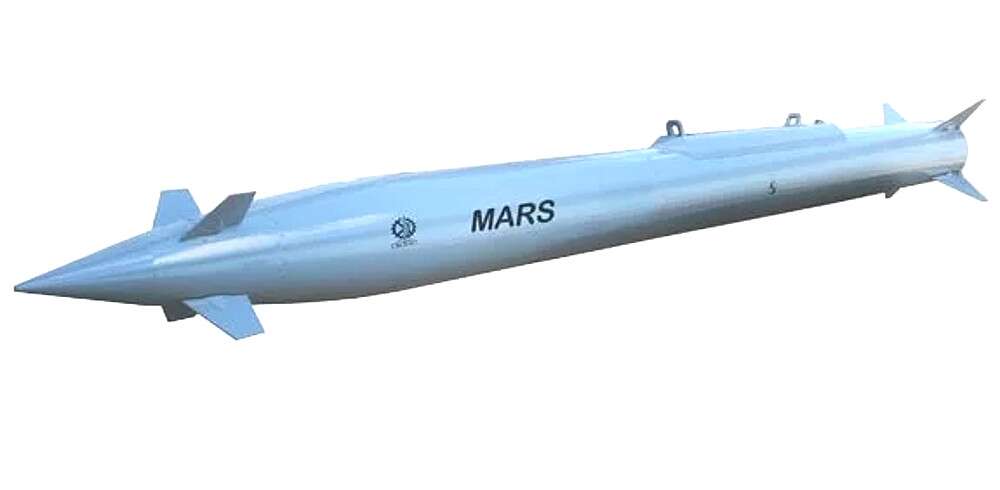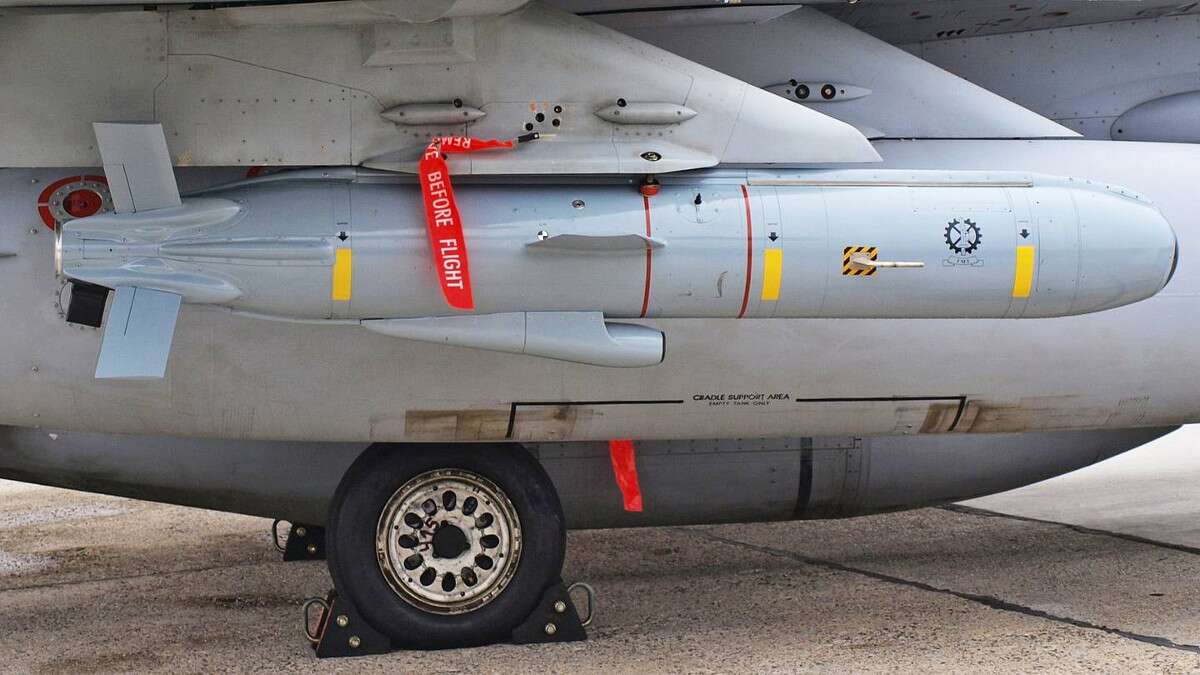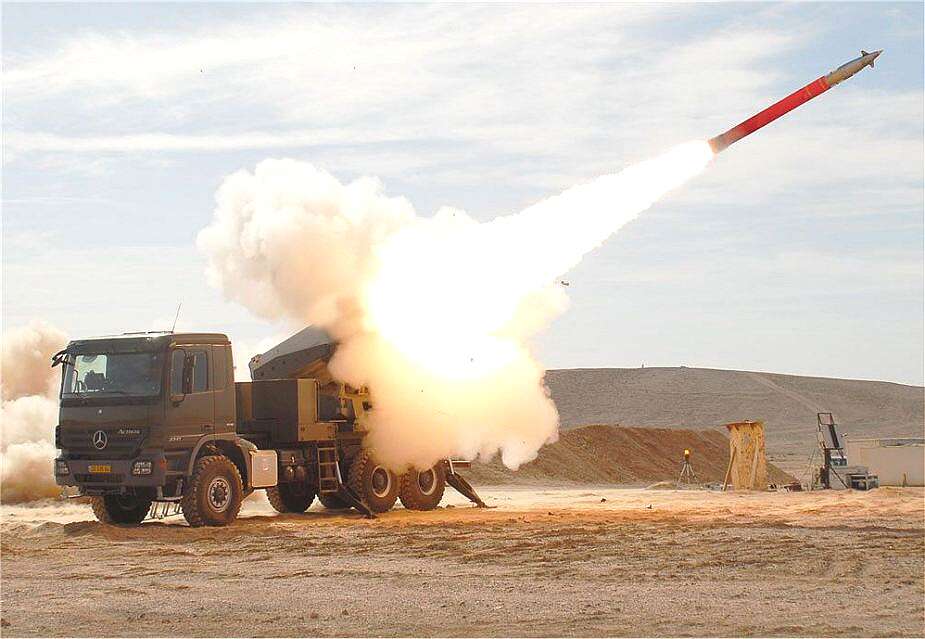
Posted on 06/11/2018 7:26:36 PM PDT by sukhoi-30mki

Israeli Military Industries Systems, or IMI Systems, in cooperation with Israel Aerospace Industries, abbreviated IAI, is close to finishing development of a new air-launched, precision-guided, high-speed weapon called Rampage that can hit targets more than 90 miles away. The announcement comes as Israel steps up its cross-border campaign against Iran and its interests in neighboring Syria, which has seen an increasing emphasis on stand-off capabilities given the complex air defense environment in that country, but the weapon could also be especially attractive to a number of foreign military forces.
The two Israeli state-run companies officially unveiled the new weapon in a press release on June 11, 2018. In the past 12 months or so, the firms have tested Rampage with the help of the Israeli Air Force (IAF) and they expect to have it in series production and available for sale in 2019, according to a separate report from Israel’s Ynet News. A video presentation and images that accompanied the system’s debut showed an IAF F-16I Sufa multi-role combat aircraft launching one of the weapons.
“Sending four fighter jets carrying four Rampage missiles [each] allows us to strike under conditions we've never had before,” Eli Reiter, head of IMI Systems’ Firepower Division, told Ynet. The weapon offers “a quantum leap in performance and extraordinary cost-effectiveness ratio, two factors which are important to many air forces around the world,” he added in the company’s press release.
Rampage is an air-launched derivative of IMI Systems’ ground-launched Extended Range Artillery guided artillery rocket, or EXTRA. There appear to be only minimal changes to the weapon’s external design for the air-launched role, namely the addition of a reinforced section of the central body with the attachment lugs.
Otherwise, from the manufacturer’s own description, the weapon sounds relatively unchanged. The ground-launched extra has the same stated maximum range and also uses a GPS-assisted inertial navigation system (INS) guidance package to hit its intended target.
IMI Systems says the guidance system will work reliably even if a hostile force is jamming or otherwise disrupting GPS receivers, which is an increasingly realistic possibility on modern battlefields. Of course, this doesn't mean that these electronic warfare attacks wouldn't degrade the weapon's capabilities. INS is far less accurate than GPS guidance and likely impact area only expands at longer ranges.
The air-launched version of EXTRA, initially known as MARS, has been in development since at least 2012. It's not the first time a ground-launched, ballistic weapon has been adapted for aerial use, either. Recently, Russia revealed an air-launched version of its Iskander quasi-ballistic missile, called Kinzhal, which could indicate the start of a trend of converting established guided rocket artillery and similar systems into lower-cost stand-off weapons for aircraft.
When it first announced the project, IMI Systems said that its goal was for the weapon to have a total weight of approximately 1,100 pounds to fit on any bomb rack that could accept a 1,000-pound class U.S. Mk 83 bomb. The plan then was for the air-launched version of EXTRA to have a warhead weight around 220 pounds.

IMI SYSTEMS
An older computer-generated rendering of what is now known as Rampage, but with the original MARS branding.
In addition, unless the air-launched rampage has a smaller warhead or motor to reduce its overall weight, it should definitely have a greater range than the ground-based EXTRA given the benefit of the added momentum of the launching aircraft, as well as the possibility of a launch at high altitude. There is also the distinct possibility that the artillery rocket system can only hit targets up to 90 miles away using a special, lightweight warhead in the first place.
But even at its stated maximum range, the weapon fills a niche between precision guided glide-bombs, such as the U.S. Small Diameter Bomb (SDB) and the Israeli-made SPICE, both of which the IAF uses, and longer-range air-launched, land-attack cruise missiles, such as Israel’s Delilah. And its supersonic speed offers significant benefits over these far slower-moving weapons.
This could make it ideal for short-notice strikes on time-sensitive targets, including mobile air defense systems and mobile ballistic missiles, giving them little, if any time to fire, seek cover, or otherwise relocate. IMI Systems says Rampage can hit targets out to its maximum range in as little as five minutes.

KGYST VIA WIKIMEDIA
A Delilah under the wing of an Israeli F-16I Sufa.
And, as IMI Systems has been quick to highlight, Rampage should be significantly less expensive than weapons in the latter category, presenting it as a cost-effective alternative for engaging targets at a safe distance from at least short- and medium-range surface-to-air missile systems. WIth supersonic speeds, it might be particularly well suited to defeating point-defense systems, as well. Depending on how many components it shares with EXTRA, a weapon already in production and in service with Israeli forces and in other countries, the air-launched derivative could be especially cost-effective.
For Israel itself, this could be a valuable capability, particularly in light of its low-level fight against Iran and its proxies, including the Lebanese militant group Hezbollah, in Syria. With a range of around 90 miles, Israeli jets carrying Rampage rockets could easily hit targets in and around the Syrian capital Damascus from within Israel’s own airspace.
Launching the weapons while flying over Lebanon or after zipping across the Lebanese-Syrian border briefly at high speed – both common IAF tactics – would allow Israeli aircraft to engage opponents near the strategic cities of Hama, Homs, and perhaps even Aleppo further to the north, with minimal exposure to increasingly threatening Syrian and Iranian air defenses.
At the same time, using Rampage would be cheaper than firing Delilahs, which Israel has been employing on higher-risk strikes into Syria. Of course, the air-launched version of EXTRA does not have the ability to hit moving targets, so it would not necessarily be able to fill in against all target sets. IMI Systems says it is best suited to destroying fixed targets such as command centers, communications nodes, military depots, airfields and any other “valuable field targets protected by anti-air systems.”
IMI Systems could offer an additional laser-guidance system to add moving target capability to the weapon in the future, as well. This could also allow other manned and unmanned aircraft, as well as forces on the ground, to cue the weapons at extended ranges, making them more flexible and responsive to short-notice requests for fire support or for strikes against fleeting enemies.
The cost factor could be even more important considering the sheer volume of potential targets. In May 2018, Israel launched more than two dozen strikes into Syria against sites housing Iranian or Iranian-backed forces, as well as Syrian air defenses that attempted to shoot down Israeli aircraft. The Israelis reportedly employed ground-based rocket artillery during that operation and it is possible that they may have done so in the past, as well.
More recently, the IAF attacked more than 50 different targets in the Gaza Strip as tensions with the Palestinian terrorist group Hamas have soared over Israeli troops shooting protesters near a fence that marks the boundary between that enclave and Israel proper. In this case, there have been significant concerns about the potential for civilian casualties given Gaza’s densely populated environment.

IMI SYSTEMS
A ground-launched EXTRA system.
IMI Systems says that, just like EXTRA, Rampage will offer extreme precision, falling nearly straight down on its target, and a relatively small warhead, to better reduce the chance of collateral damage. And again, given the speed and range capabilities of the weapon, it could significantly shorten the time it takes between spotting targets in Gaza, which may be just small groups of individuals and a readily portable rocket launcher, and engaging them.
With all this in mind, Rampage could also be an attractive, lower cost option for any other country looking to acquire an air-launched stand-off capability. IMI Systems’ says it already has one, unnamed buyer for the system, which is almost certainly a foreign customer.
Vietnam, which already operates EXTRA and has reportedly been considering buying Delilah missiles, would be an obvious potential customer. When it first announced MARS, IMI Systems said it was interested in pitching the weapon as readily adaptable to almost any fourth generation combat jet and potentially even lighter aircraft. The possible launch platforms included virtually any variant of Russia’s Flanker family, which would include the Vietnamese Air Force’s Su-30MK2s.
The Vietnamese military has already deployed its ground-based EXTRA systems onto islands it controls in the South China Sea, which puts them within range of nearby Chinese outposts. An air-launched derivative would give authorities in Hanoi another means of challenging Beijing’s claims in the region and could help keep its aircraft launch strikes while keeping further away from China’s steadily expanding defensive network in a crisis.
The other known EXTRA operator, Azerbaijan, might also be interested in Rampage, which would be able to hit targets almost anywhere in neighboring Armenia from within its own airspace. These two countries have been locked in protracted and often violent conflict over a disputed portion of their shared border. The country has a number of MiG-29 Fulcrum aircraft, another platform IMI Systems’ suggested could work with Rampage in the past.
Of course, the Israeli firms seems to be eager to court export sales for the system broadly. It has claimed that the air-launched weapon could potentially work with variants of the American-made F-15 Eagle and F/A-18E/F Super Hornet, the Eurofighter Typhoon, and upgraded, second-hand Israeli Kfirs, among many other types. IMI Systems has said that Rampage could be an option for the F-35, but at nearly 15.5 feet long, there's no way it could fit inside the aircraft's internal weapons bays and would work only if the planes flew in a non-stealthy configuration.
Adding stand-off weapons to fourth generation aircraft can significantly add to their utility in general, especially as long-range surface-to-air missile systems continue to proliferate around the world. Unless a country is willing to go through the time-consuming and immensely expensive process of developing a stealthy fifth-generation platform, more advanced and longer range air-launched weapons offer the only real alternative to continue holding potential enemies at threat from the air, especially when it comes to critical targets deeper within their territory. It could also present a valuable tool for attacking air defense nodes to pave the way for additional follow-on strikes.
If the IAF is indeed already lined up to buy Rampage, it might only be a matter of time before we see it employed against targets in Syria. If it proves itself there, that could help IMI Systems pitch it to other foreign customers.
This stand-off missile has similarities to JSOW and SDB.
How far does the range have to be before you can call it a cruise missile? Short-range cruise missile versus long-range stand-off missile, what’s in a name?
cruise missiles have jet engines in them. missile missiles have rocket engines in them
These would be a good way to remodel Assad’s palace.
And a JSOW has no engine in it...:^)
“Short-range cruise missile versus long-range stand-off missile, what’s in a name?”
Interesting question. Perhaps the difference is tactical vs strategic. The standoff is used, usually, against weapons that can be brought to bear on assets you want to protect. A cruise missile is used to destroy things that may be a threat in the future, like a shipment of missiles being delivered to Hezbollah.
..................
Sort of a small distinction: But consider a cruise missile is designed for controlled horizontal flight with an air-breathing engine, using the same control system for flight to provide mid-course guidance and terminal homing. You're right - there is little difference between “cruise missile” and “stand-off (cruise) missile”. Range? But Tomahawk is already several hundred miles - Harpoon? Much less.
Bigger difference: This is a terminally-guided ballistic missile (launch with booster and sustainer rocket engine), coast up, coast over (coast), and coast down (aero-guided fins) adapted for being dropped from an airplane rather than the “usual” static launcher. More of a controls + sensor change than a hardware change.
Good idea - they are claiming they can pull it off.
"Tell Allah "Yahweh sez 'Hey!'"
Disclaimer: Opinions posted on Free Republic are those of the individual posters and do not necessarily represent the opinion of Free Republic or its management. All materials posted herein are protected by copyright law and the exemption for fair use of copyrighted works.